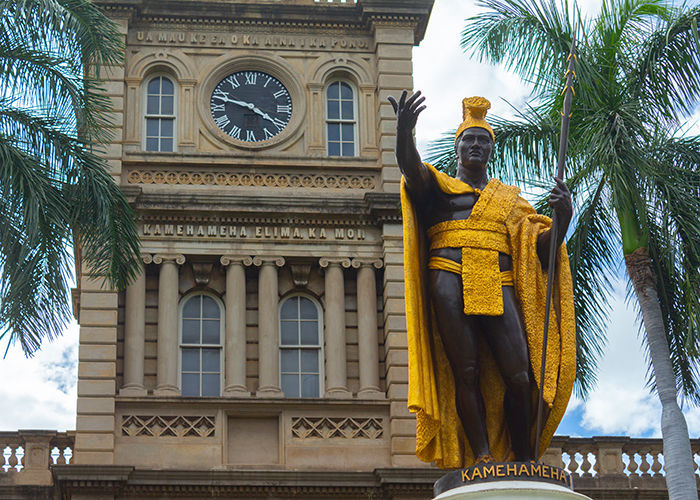 More 2023 Adventures |
Around Honolulu 9.4 mi (15.1 km) |
 Next Day |
Aloha, everyone!
After spending a lot of time inland in 2022, this year, I’m heading for the water. I am an aquatic rodent, after all, so in the chill of mid-January, I hopped on a plane for the Hawaiian Islands. There are six national park sites on my list spread across four islands, but today, I’m starting with the capital of them all: O‘ahu! I wasn’t expecting to see much on my first day because of a rain forecast, but I got off my 5-hour flight to find it partly cloudy instead. That gave me a whole afternoon to explore the historic heart of Honolulu!
Naturally, I started off at the Hawai’i state capitol, my 40th, and a super unusual one at that! Unlike most of the others, it is uniquely Hawaiian, built in Hakonya style with open air circulation and features that represent volcanoes and the Pacific Ocean! It’s rumored that its design allows folks to see rainbows from inside the courtyard when it rains!
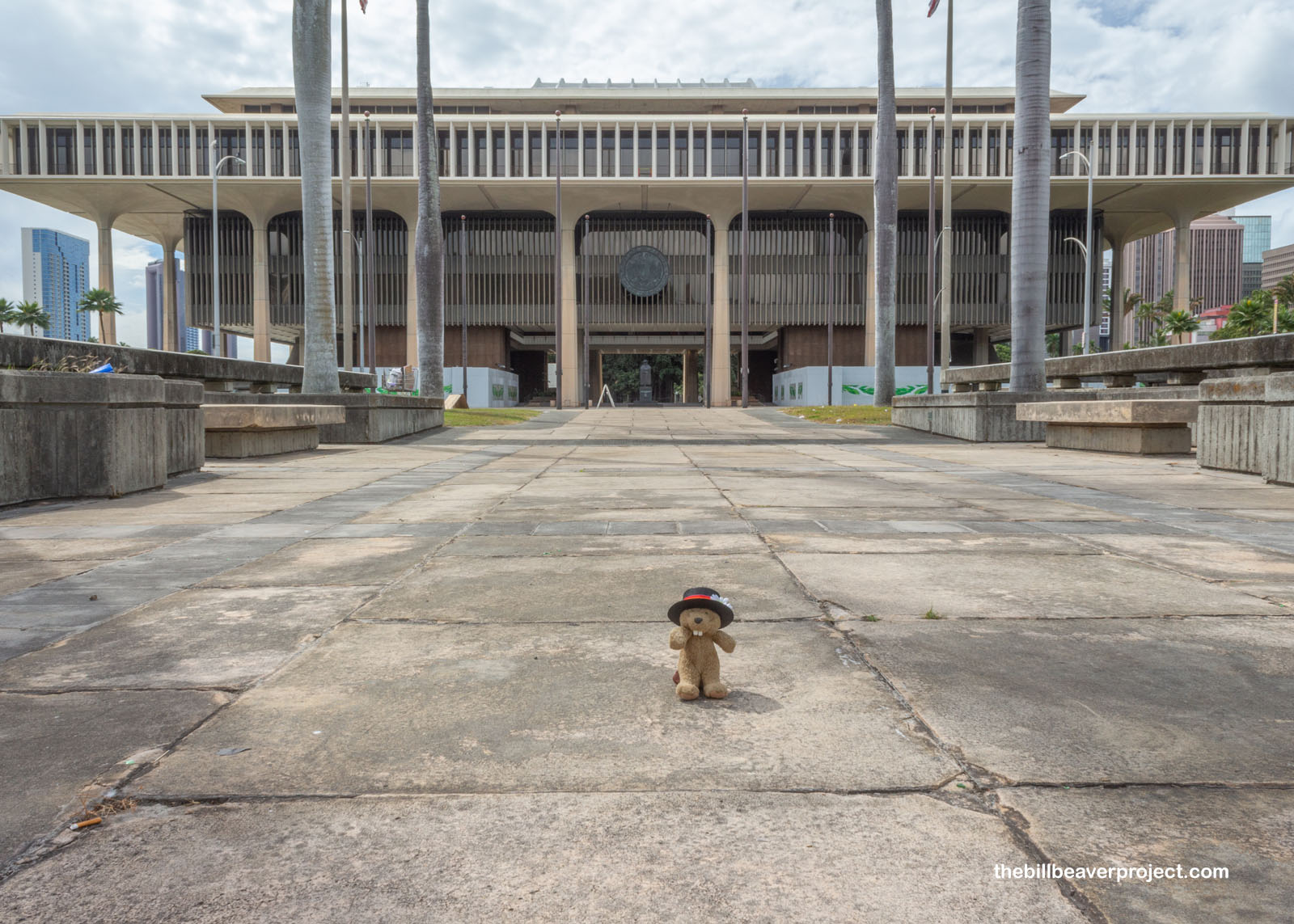 |
Across the street from the capitol, I got a preview of what brought me here in the first place: the Eternal Flame Memorial, remembering the attack on Pearl Harbor that took place on December 7, 1941. Designed by Bumpei Aka, a sculptor from Kauai, it was dedicated on October 28, 1972 and meant to burn forever in honor of all members of the Hawaiian armed forces. Shortly before I arrived, though, the burner had gone out for several weeks because too many folks had been throwing trash into it. Thankfully, it had been repaired and was burning brightly again when I visited!
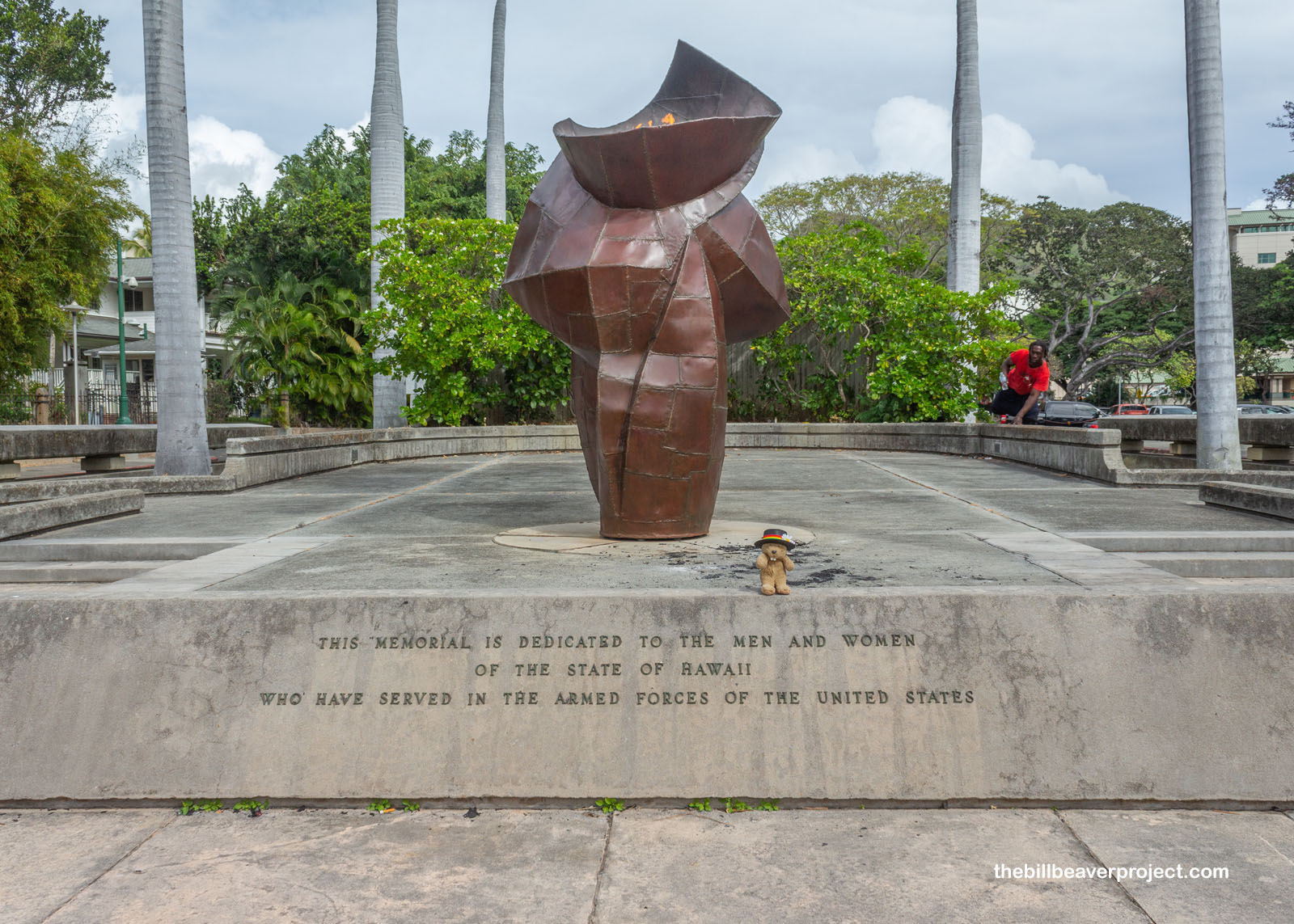 |
While the seven main islands of Hawaiʻi have been united since 1795, Honolulu has only been the capitol since 1845, when Kamehameha III moved it here from Lahaina, Maui. The royal family set up their residence on top of an old heiau, or temple, but they didn’t have an official “proper palace” until 1879. That’s when construction began on this, the ʻIolani Palace, where the first European-style coronation took place in 1883, and where, only a decade later, the Committee of Public Safety staged a revolt against Queen Liliuokalani. Her resignation ended the Hawaiian monarchy entirely!
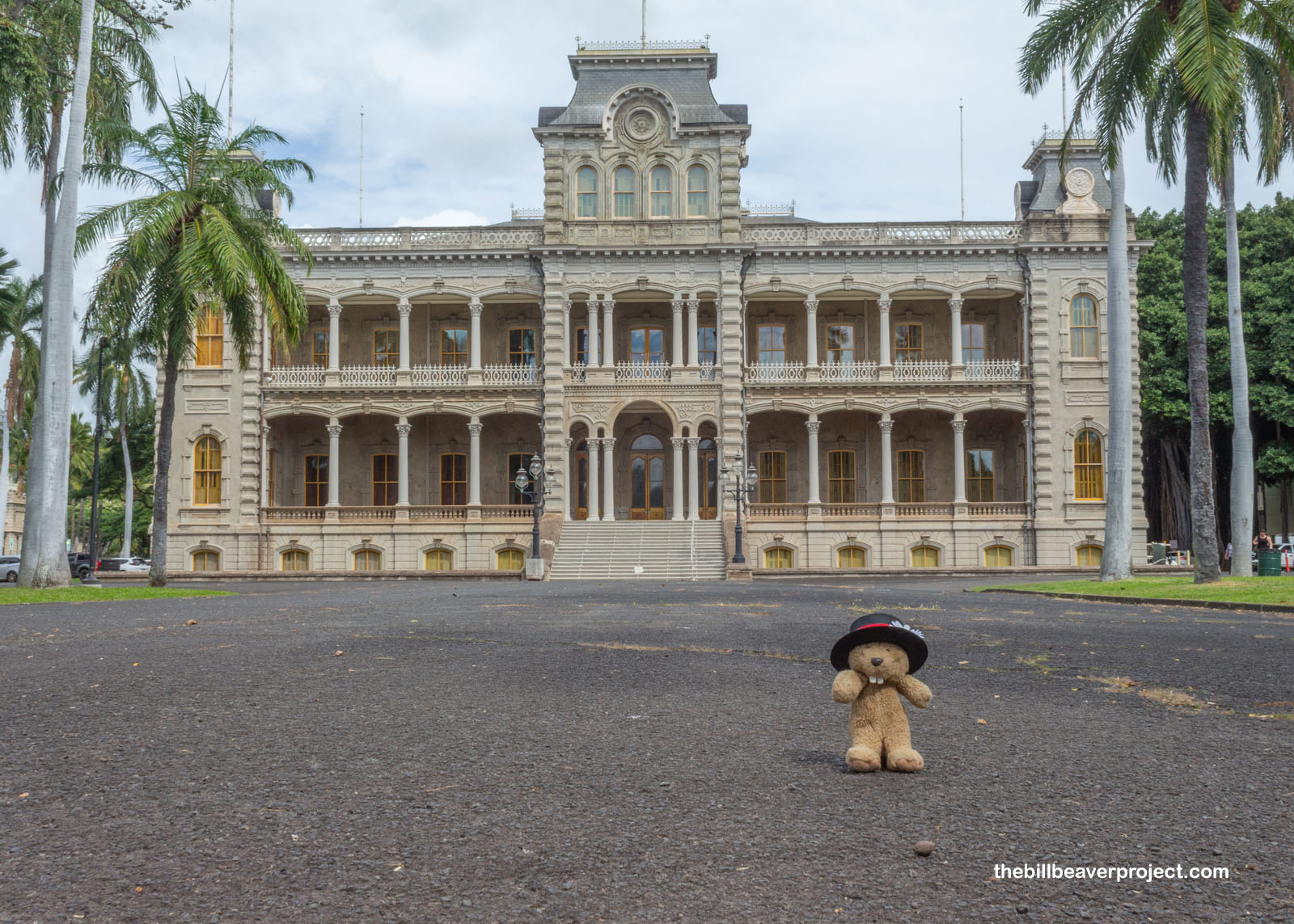 |
Across the street, the government of Hawaiʻi continued at the Aliʻiōlani Hale, one of the earliest concrete block buildings in (what is now) the United States! It was a public office building from the reign of King Kamehameha V to the end of the monarchy, when this became the Supreme Court of Hawaiʻi. The executive branch moved into the ʻIolani Palace, and though Hawaiʻi became a US State on August 21, 1959, today, there is still a famous royal statue out front: Kamehameha I, the king who first united Hawaiʻi back in 1795!
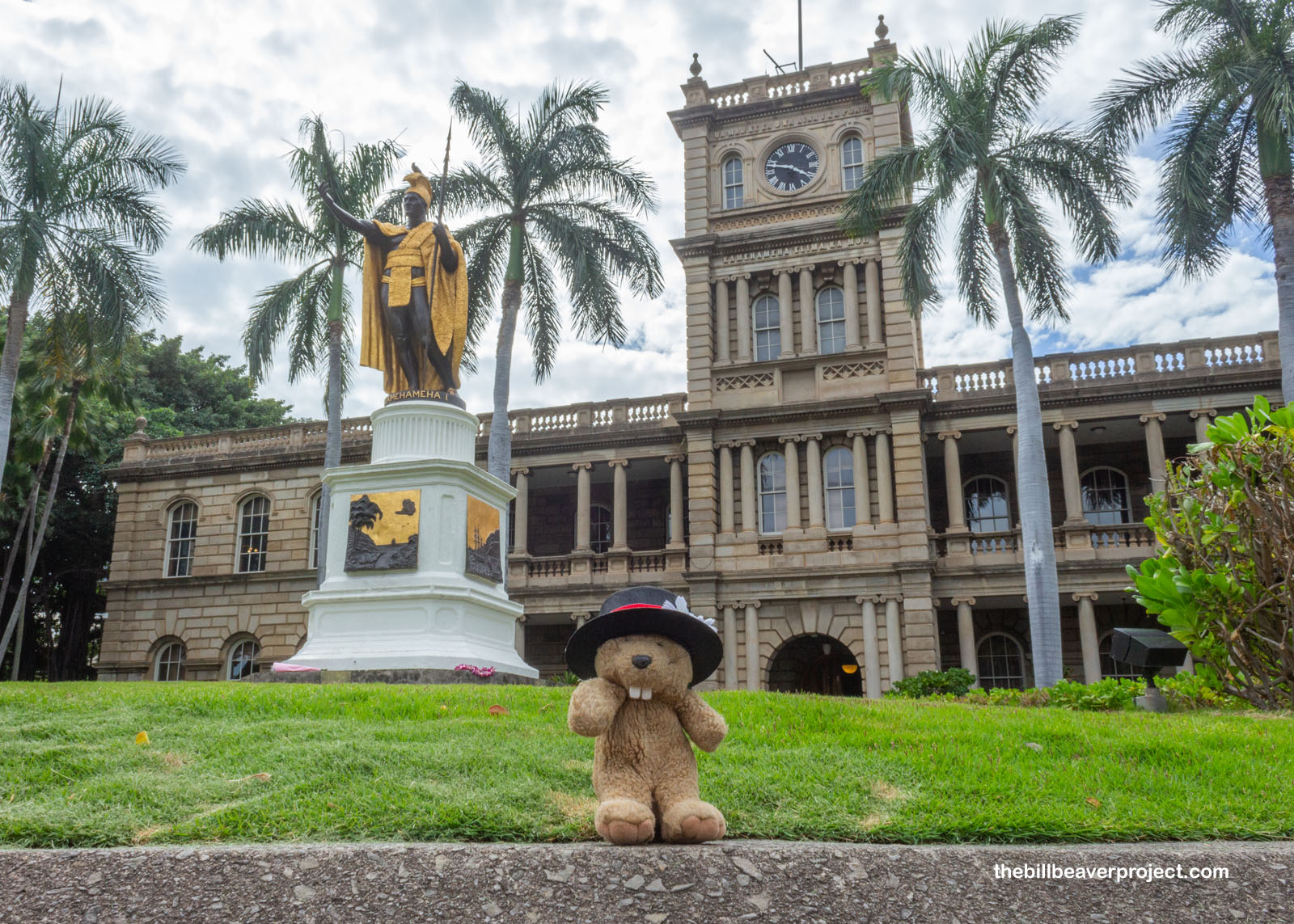 |
Euro-American influence had been growing here for a while, though. Missionaries first started arriving here in 1820, and King Kamehameha III gave them land to build a church. Led by Reverend Hiram Bingham of Vermont, this first church, Kawaiahaʻo Church, went up between 1836 and 1842, built from coral that had been carved into 14,000 slabs weighing a thousand pounds each! It was here that Hawaiʻi’s statehood ceremonies were held in 1959, eighteen years after the attack on Pearl Harbor!
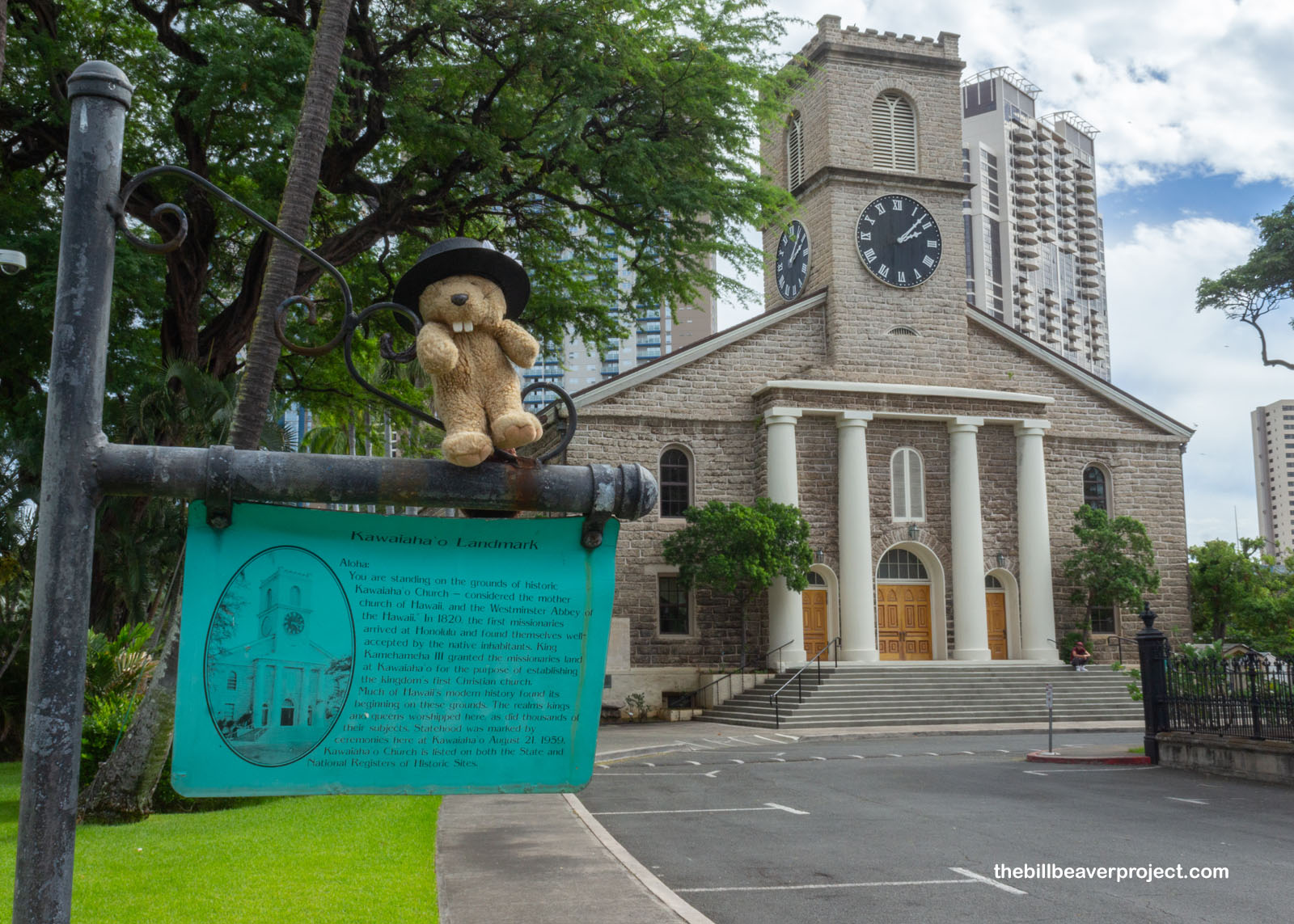 |
I’ll get to that story tomorrow, but as it was already late in the afternoon, I headed down to Waikiki, where King Kamehameha I had come ashore in 1794 to attack Chief Kalanikupule, and where that same king set his royal court in 1809. Later that century, Waikiki, a spring-rich area which means “spouting water,” started to transition into a royal retreat center. In that spirit, it’s still one of the world’s most famous tourist destinations today!
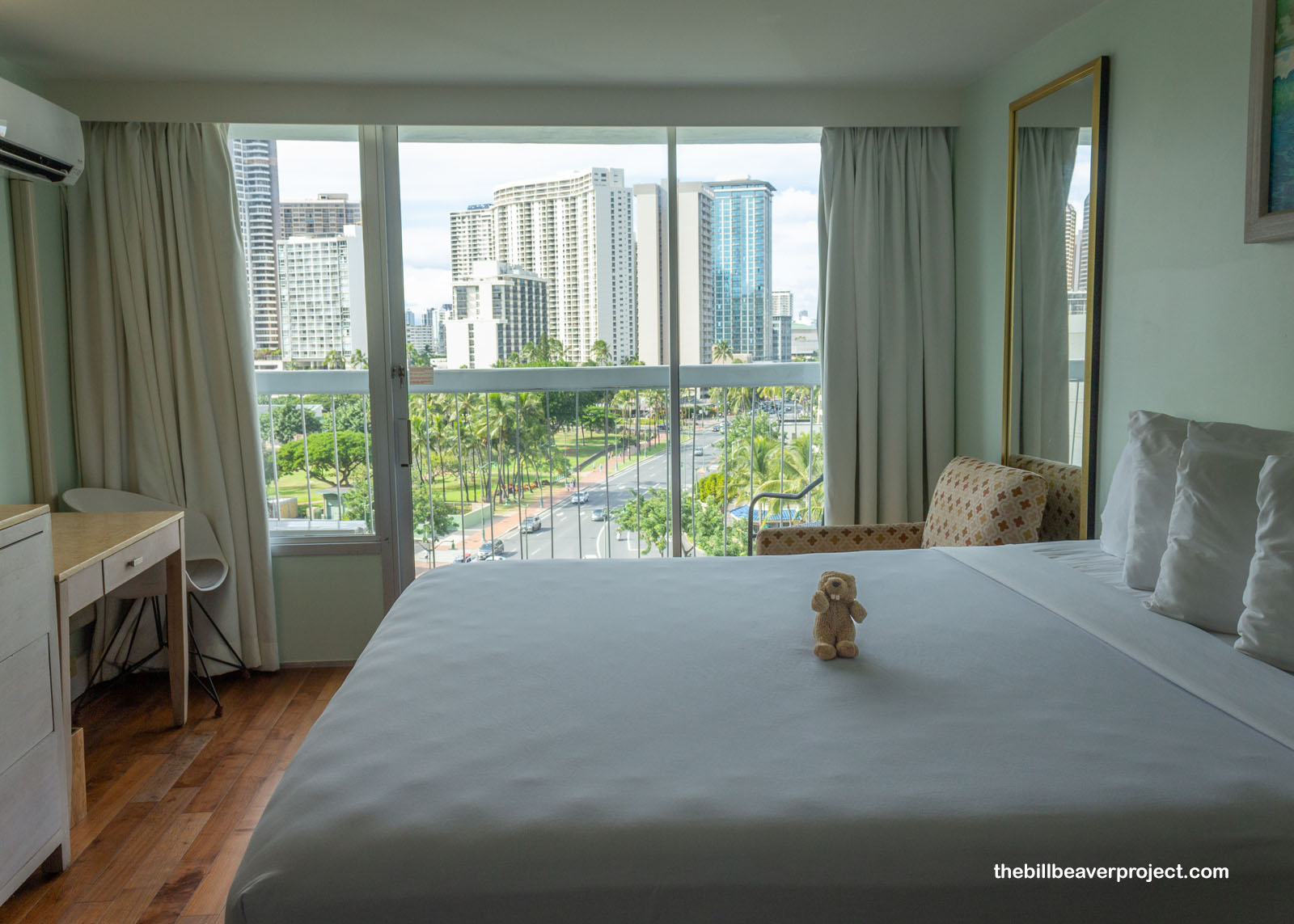 |
After settling into my room on the 12th floor of the Hotel La Croix, I peered out over this tropical destination, making plans for more mōʻaukala, more history, tomorrow! But first, I was hungry, so I set out along Kalākaua Ave to find some tasty poké!
Aloha pō!

 More 2023 Adventures |
Total Ground Covered: 9.4 mi (15.1 km) |
 Next Day |
